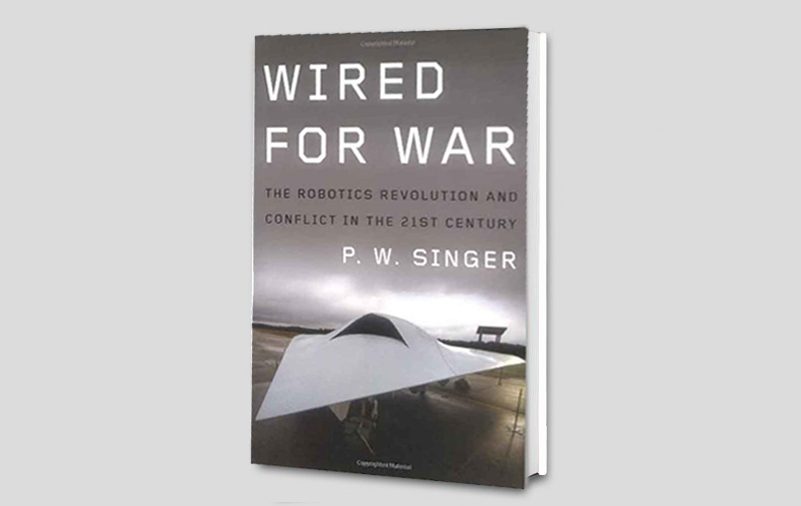Acts that were once exclusive to the realm of science fiction have started to play out on modern day battlefields, with a massive shift in military technology that affects not only battles, but also the politics, economics, laws and ethics that surround war itself.
During the first decade of the new century, thousands of robotic systems were in use in Iraq, where pilots sitting in Nevada carried out orders killing terrorists in Afghanistan from a distance, and scientists were discussing the degree of intelligence and lethality in programming their robotic inventions. Many of the most well-known science fiction authors are providing advisory services to the Pentagon on the next generation of robotic weapons.
With these technologies, it became easier to start wars, and to remove the human element from the battlefields. By seeming to lower the human costs of war, they may tempt us into more wars, while democracy is undermined by distancing the people from decisions of war, and wars become less bound by ethical controls.
Paradoxically, these technologies are likely to cause harm to those who invented them. Other nations, as well as terrorists, have begun to make or buy their own robotic weapons, which might undermine US military supremacy. Enemies and terrorist groups benefit, at no cost, from technology development investments by states and industries – such as the Internet and GPS software – in planning their operations and selecting their targets.
War robots allow constant monitoring, in various times and conditions, striking targets with extreme accuracy and precision. Their most important advantages might be the increased possibility of taking risks, approaching sources of danger as well as multi-functionality. They are platforms on which anything, from cameras to weapons, can be mounted.
Robots can also work in conditions that humans cannot work in such as dangerous maneuvers involving aircraft and tidal waves. Furthermore, robots can communicate and exchange information incredibly fast using common programming language.
The U.S. air force endeavors to operate 45% of its future fleet of unmanned drone bombers. Experts believe that unmanned small aircrafts will constitute 75% of the military’s future air forces. The USA has built a number of unmanned devices to be used in space, which will open up a new arms race.
Specialists reject the notion that robots will have the ability to independently open fire, and stress that robots will still need a human permission to open fire. However, practically speaking, this may be difficult for a human to achieve given the difficulty of simultaneously controlling a vast number of robots within a short space of time in battle, in addition to the density of information collected and processed by robots. Many also fear the possibility of robot malfunction, software deficiency, signals interference, or information misinterpretation, which may lead a robot to misfire. They also fear that enemies may be able to interfere with and jam robots.
The US army endeavors to build forces that are primarily robotic by 2025. There is a plan to have 150 soldiers and 2000 in each military detachment. Robots will have partial or full independence within each mission. While the human warrior will not disappear, he will not monopolize war decisions including life or death decisions.
The army demographics will change as a result of the growing use of robots. Since devices start to be more independent and advanced, they require less human involvement, and less training for their male and female operators. Younger troops can now play roles that have long been limited to older troops and higher ranks.
The new technologies allow the elderly as well as war-wounded to continue the fighting, as modern assistive devices support them beyond their natural capabilities. Since aircraft usually take off from bases located in war zones, the ‘civilian’ assistant team is more exposed to physical danger than ‘military’ pilots who fly the aircraft from Nevada and are exposed to danger merely ‘virtually’.
Robotic systems would weaken the morale of the enemy, as the idea of being killed by a remotely-controlled machine is discouraging. The new generation of unmanned systems have instilled fear and confusion by virtue of their terrifying form and sound. Yet, the enemy is quick to adapt to new weapons. Such systems could send undesired messages, such as the US forces’ fear of death, which would further fuel efforts to kill Americans, even in the US. Moreover, the excessive use of power and killing of civilians can alienate allies and create enemies, which could complicate the conditions to put in place the foundations for post-war peace.
Robotic revolution requires a legal revolution, as new technologies go beyond warfare regulations; however, this does not draw the attention of concerned organizations, such as the International Committee of the Red Cross and Human Rights Watch, which view these new technologies as too futuristic, while robotics makers and government agency clients alike tend to avoid discussions involving ethical and legal supervision of these new weapons, where soldiers fear that such supervision could hinder their missions.
By: Peter W. Singer
Peter W. Singer is a senior fellow at the Brookings Institution. He previously worked as a consultant for the Departments of Defense and State, the CIA, and Congress. He is the author of two earlier books, Corporate Warriors: The Rise of the Privatized Military Industry, and Children at War. He has also published studies in the New York Times and Foreign Affairs.
Publisher: The Emirates Center for Strategic Studies and Research
Year: 2010













